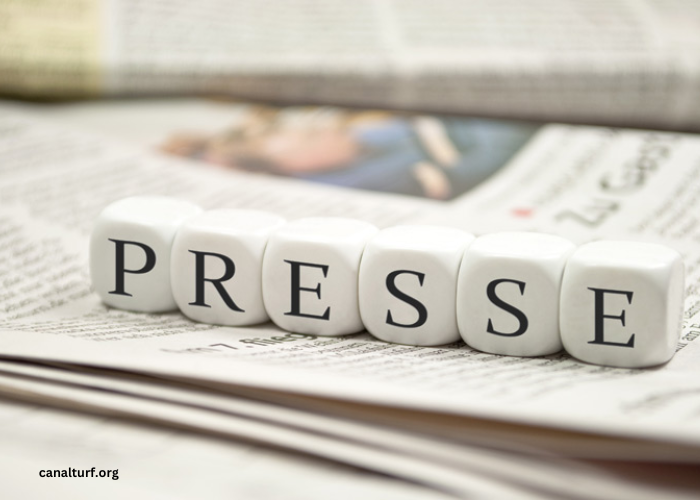In an era where information is not only power but also omnipresent, digesting and comprehending media has never been more crucial. Synthèse de la Presse – or Media Synthesis in English – denotes the process of distilling vast amounts of media content into accessible summaries and analysis.
Whether for business, education, or individual growth, understanding the synthèse is vital. This article delves deep into its significance, process, and nuances in the contemporary media landscape.
Introduction to Synthèse de la Presse
Synthèse de la Presse can be traced back to the early days of newspapers when editors and journalists would curate and summarize international news for their readers. This not only allowed people to be informed about major global events but also encouraged a culture of staying updated without getting overwhelmed.
The Need for Media Synthesis in the Digital Age
The proliferation of online news sources, blogs, and social media platforms has led to an informational overload. While we have more access to information than ever, the challenge lies in sieving through the noise and grasping the essence.
Reduction of Information Overload: With countless news sites, blogs, and social media posts, it’s easy to get lost. Synthesizing provides a clear, concise view of events without the noise.
Time Efficiency: Not everyone has hours to read through every detail. A well-synthesized media summary can convey the crux in minutes.
Improved Understanding: Synthesis often involves not just summary, but analysis, offering insights that raw information might not provide.
The Art and Science Behind Media Synthesis
Art: At its heart, synthesis requires an understanding of narrative, of what makes a story compelling. The synthesizer must discern which details are crucial for the audience’s comprehension and which can be left behind.
Science: Modern Synthèse de la Presse uses algorithms and AI to filter and categorize news. These tools identify patterns, trends, and vital details, assisting human synthesizers in creating a comprehensive summary.
Challenges in Media Synthesis
Bias and Objectivity: One of the chief challenges in synthesizing news is ensuring objectivity. It’s essential for synthesizers to recognize their biases and ensure they don’t color the summary.
Over-simplification: While the goal is brevity, there’s a risk of oversimplifying complex issues, leading to misunderstandings.
Keeping Up with Real-time News: The 24/7 news cycle means synthesizers have to be on their toes to provide timely updates.
The SEO Implication
For businesses and websites, the SEO benefits of Synthèse de la Presse are manifold:
Fresher Content: Search engines value fresh, updated content. Regular media synthesis provides a stream of new content.
Keyword Rich: By its nature, a synthesized summary will contain essential keywords related to current events, making it SEO friendly.
Audience Engagement: Readers appreciate concise, well-analyzed content, leading to higher engagement and better SEO metrics like dwell time.
The Future of Synthèse de la Presse
With advances in AI and machine learning, media synthesis will only become more sophisticated. We can expect:
Personalized Synthesis: Algorithms curating news based on individual preferences and past reading habits.
Multimedia Synthesis: Beyond text, synthesis of videos, podcasts, and infographics.
Real-time Synthesis: Instantaneous summaries as events unfold.
Methodologies in Modern Media Synthesis
The strategies behind effective media synthesis are ever-evolving, driven by technological advancements and shifting reader expectations.
Manual Synthesis: Rooted in traditional journalism, manual synthesis involves experienced editors and journalists curating and summarizing news while ensuring accuracy and coherence.
Automated Synthesis: Employing artificial intelligence and machine learning to analyze, categorize, and summarize large volumes of media content. Techniques such as Natural Language Processing (NLP) and sentiment analysis play a pivotal role.
Hybrid Synthesis: Combining the precision of AI with the discernment of human editors to ensure balanced, insightful, and reader-friendly media summaries.
Cultural and Global Implications
Media synthesis plays a significant role in shaping cultural and global perspectives, enabling:
Cross-cultural Understanding: A synthesized press offers insights into global happenings, fostering international comprehension and empathy.
Global Decision Making: By keeping decision-makers abreast of vital developments worldwide, it aids in informed, timely actions on an international stage.
Case Studies: Impact of Synthèse de la Presse
Examining real-world scenarios where media synthesis has driven social, political, and economic understanding is pivotal.
Crisis Management: During global crises, synthesis aids by providing succinct, actionable information, mitigating panic and fostering informed responses.
Political Elections: In the heated atmosphere of elections, media synthesis can distill political strategies, policies, and public responses into digestible formats, aiding voter decision-making.
Incorporating Synthèse de la Presse in Educational Systems
In educational contexts, media synthesis can serve as a tool for:
Enhancing Critical Thinking: Encouraging students to engage with synthesized information aids in developing analytical and critical thinking skills.
Global Awareness: Offering insights into worldwide events and fostering a global perspective among students.
Ethical Considerations in Media Synthesis
Ensuring ethical practices in media synthesis involves:
Transparency: Clearly communicating the methodology and any inherent biases in the synthesis process.
Accuracy: Verifying information accuracy to prevent the propagation of false or misleading narratives.
Inclusivity: Ensuring diverse viewpoints are considered and presented to provide a rounded perspective.
Navigating Through Fake News and Misinformation
In an age rampant with misinformation, media synthesizers bear the responsibility of:
Fact-Checking: Employing rigorous fact-checking to ensure the validity of synthesized information.
Addressing Misinformation: Actively correcting false narratives and providing readers with accurate, trustworthy summaries.
The Interplay of Social Media and Synthèse de la Presse
Understanding how social media impacts and is impacted by media synthesis:
Virality and Synthesis: Analyzing how viral content and trends can be synthesized without perpetuating misinformation or biases.
Engaging with Social Media Narratives: Offering a counterbalance or enhanced understanding to the often polarized and sensationalized narratives prevalent on social platforms.
Conclusion
Synthèse de la Presse is more than a tool; it’s a lifeline in the information age. As we grapple with an ever-expanding sea of content, having the means to quickly understand the essence becomes invaluable. With its rich history, current relevance, and promising future, media synthesis stands as a beacon for informed audiences everywhere.
As we steer through the limitless ocean of information, Synthèse de la Presse lights the way, offering clarity amidst chaos and ensuring that while we might sail on different ships, we are informed by the same stars.
The intertwining of technology, ethics, and user-centric design in media synthesis will not only dictate the future of information consumption but will also steer our collective, global journey towards an informed and united future.




